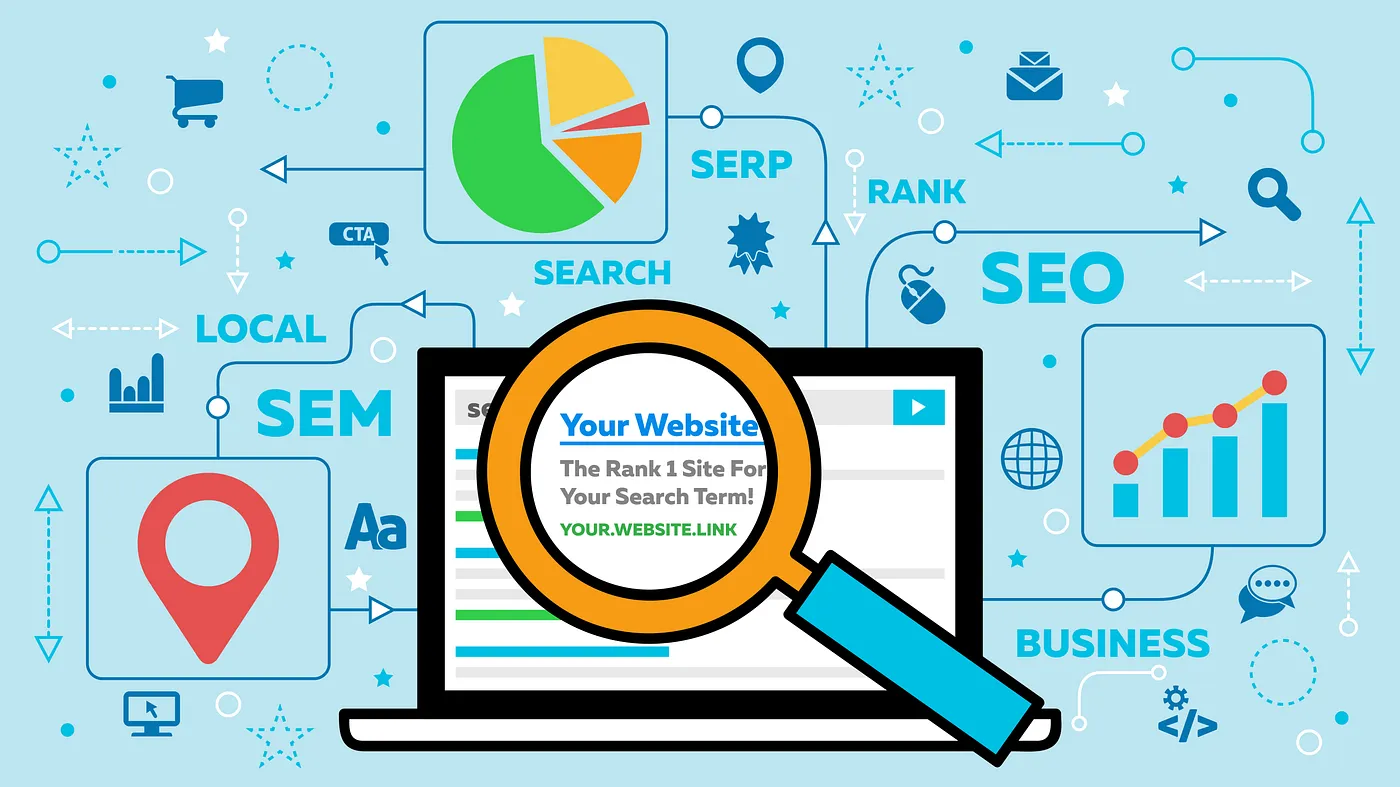Introduction SEO
Building a website with SEO (Search Engine Optimization) in mind is crucial for ensuring that your website ranks well in search engine results and attracts organic traffic. In this article, we will discuss the key steps and strategies to build a website with SEO, focusing on creating quality content, optimizing on-page elements, improving site speed and mobile-friendliness, building quality backlinks, and prioritizing user experience.

By following these guidelines, you can increase the visibility of your website and drive more targeted traffic to your business.
1. Create Quality Content
When it comes to building a website with SEO in mind, content is king. High-quality, relevant, and engaging content not only attracts visitors but also helps search engines understand what your website is about.
Here are some tips for creating quality content:
- Research and understand your target audience to create content that meets their needs and interests.
- Use relevant keywords naturally throughout your content to improve its visibility in search engine results.
- Write informative and well-structured articles, blog posts, and product descriptions.
- Include multimedia elements such as images, videos, and infographics to enhance the user experience.
- Regularly update your content to keep it fresh and relevant.
2. Optimize On-Page Elements
Optimizing on-page elements is crucial for improving the visibility of your website in search engine results. Here are some key on-page elements to focus on:
- Title Tags: Use descriptive and keyword-rich title tags for each page of your website. Keep them within 60 characters to ensure they are fully displayed in search results.
- Meta Descriptions: Write compelling meta descriptions that accurately summarize the content of each page. Include relevant keywords and keep them within 160 characters.
- Headings: Use hierarchical headings (H1, H2, H3, etc.) to structure your content and make it easier for search engines to understand.
- URL Structure: Use descriptive URLs that include relevant keywords. Avoid using generic or random strings of numbers and characters.
- Image Alt Text: Add descriptive alt text to your images to improve accessibility and provide additional context to search engines.
3. Improve Site Speed
Site speed is an important factor in both user experience and search engine rankings. A slow-loading website can lead to higher bounce rates and lower search engine visibility.
Here are some tips to improve your site speed:
- Optimize Images: Compress and resize images to reduce their file size without compromising quality. Use modern image formats like WebP.
- Minify CSS and JavaScript: Remove unnecessary characters, spaces, and line breaks from your CSS and JavaScript files to reduce their size.
- Enable Browser Caching: Set expiration dates for static resources like images, CSS, and JavaScript files to enable browser caching.
- Use Content Delivery Networks (CDNs): CDNs distribute your website’s content across multiple servers worldwide, reducing the distance between your website and its visitors.
- Choose a Fast Web Hosting Provider: Select a reliable web hosting provider that offers fast server response times and optimal performance.
4. Ensure Mobile-Friendliness
In today’s mobile-first world, having a mobile-friendly website is essential for SEO. With more and more users accessing the internet via mobile devices, search engines prioritize mobile-friendly websites in their rankings.

Here’s how you can ensure mobile-friendliness:
- Responsive Design: Use a responsive web design that automatically adjusts the layout and content of your website to fit different screen sizes.
- Mobile-Friendly Test: Use Google’s Mobile-Friendly Test tool to check if your website meets the mobile-friendly criteria.
- Optimize for Touch: Make sure your website is easy to navigate and interact with on touchscreens by using large buttons and touch-friendly elements.
- Improve Page Load Time: Optimize your website’s performance on mobile devices by following the tips mentioned earlier to improve site speed.
5. Build Quality Backlinks
Backlinks, also known as inbound links, are links from other websites that point to your website. They play a crucial role in SEO as search engines consider backlinks as a vote of confidence for your website’s credibility and authority. Here are some strategies to build quality backlinks:
- Guest Blogging: Write high-quality guest posts for reputable websites in your industry and include a link back to your website in the author bio or within the content.
- Broken Link Building: Find broken links on other websites and offer your own content as a replacement, including a link back to your website.
- Content Promotion: Promote your content through social media, email outreach, and influencer marketing to attract natural backlinks.
- Participate in Online Communities: Engage in relevant online communities, forums, and Q&A platforms to establish yourself as an authority and gain backlinks.
- Monitor Competitors: Analyze the backlink profiles of your competitors and reach out to the same websites to request backlinks.
6. Prioritize User Experience
Providing a positive user experience is not only important for retaining visitors but also for SEO. Search engines prioritize websites that offer a seamless and user-friendly experience. Here are some tips to prioritize user experience:
- Easy Navigation: Make sure your website has a clear and intuitive navigation structure that allows users to find what they’re looking for easily.
- Fast Loading Time: As mentioned earlier, optimize your website’s speed to ensure fast loading times and minimize user frustration.
- Mobile-Friendly Design: Ensure that your website is responsive and provides a seamless experience across different devices.
- Clear Call-to-Actions (CTAs): Use clear and compelling CTAs to guide users towards desired actions, such as making a purchase or subscribing to a newsletter.
- Readable and Accessible Content: Use legible fonts, appropriate font sizes, and sufficient color contrast to improve readability. Make sure your website is accessible to users with disabilities.
7. Regularly Update and Maintain Your Website
Regularly updating and maintaining your website is essential for optimal performance in search engine rankings. Here are some tasks you should regularly perform:

- Content Updates: Keep your content up to date by adding new articles, blog posts, and product/service information.
- Fix Broken Links: Regularly check for broken links on your website and fix them to improve user experience and search engine visibility.
- Monitor Website Analytics: Use tools like Google Analytics to track your website’s performance, identify areas for improvement, and make data-driven decisions.
- Security Updates: Regularly update your website’s software, plugins, and themes to protect against security vulnerabilities.
- Monitor Search Engine Algorithm Updates: Stay up to date with the latest search engine algorithm updates to adapt your SEO strategies accordingly.
Conclusion
Building a website with SEO in mind is a continuous process that requires attention to detail and a focus on providing a positive user experience. By creating quality content, optimizing on-page elements, improving site speed and mobile-friendliness, building quality backlinks, and prioritizing user experience, you can enhance the visibility and performance of your website in search engine rankings. Remember to regularly update and maintain your website to stay ahead of the competition and adapt to evolving SEO trends. With these strategies in place, you can build a website that not only attracts organic traffic but also achieves long-term success in the digital landscape.




